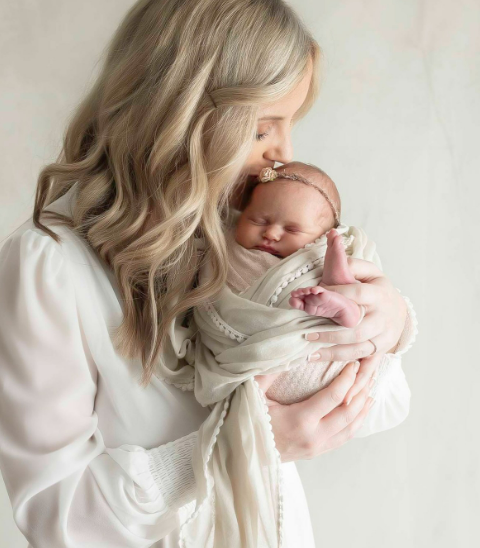Hello, my sweet photographer friends! I spent a lot of last year working on updating my website. This was mostly a design update, and while it’s been fun and so rewarding to see it come together, design is only part of how to set up your photography website for SEO. It’s also the part that a lot of us, as photographers, like to focus on. After all, it’s visual, it’s pretty, and that’s what we love! If you want a visually-appealing website, you may utilize AI tools to turn concepts into stunning visuals. However, don’t forget the tech side—whether it’s a flutter developer helping with site performance or optimizing for SEO, it’s important to have both sides working together to ensure your website is not only beautiful but also functional and discoverable.
While design is certainly a huge part of creating a website that reflects your brand, having a professional touch can take it to the next level, especially if you’re not a web design expert yourself. That’s where a graphic design agency like Graphically comes in, offering services that transform your ideas into a cohesive, visually stunning, and fully functional site. Rebranding isn’t always about starting over. As this guide to rebranding strategy explains, subtle shifts in audience expectations or market positioning can indicate it’s time to evolve your visual identity without discarding brand equity.
Working with an experienced team can make the difference between a website that merely looks nice and one that actually works for you—driving traffic, keeping visitors engaged, and ultimately converting them into clients. And for us photographers, having a beautifully crafted website means presenting our portfolios in the best possible light, where each image has its moment to shine, enhancing both your artistry and business.
But optimizing your website for SEO goes beyond aesthetics. It involves ensuring that your site is easy for search engines to understand, which means focusing on things like keyword placement, site speed, and mobile-friendliness. Incorporating outstanding services LetsGetOptimized into your strategy can make a significant difference in ensuring that your beautiful site also functions like a well-oiled machine for SEO. These factors play a huge role in how your site ranks on search engines and how easily potential clients can find you.
When it comes to SEO strategies, it’s not just about packing your website with keywords—it’s about a holistic approach that enhances both user experience and search engine visibility. Crafting a seamless website architecture, optimizing for faster load times, and ensuring that your content is highly relevant to your audience’s needs are essential components. These strategies work together to improve your website’s overall performance.
While keyword research and placement are crucial for ranking, it’s equally important to focus on creating high-quality content that resonates with visitors and encourages them to stay longer on your site. A well-optimized website balances the needs of both the user and the search engine, helping you connect with your target audience and convert visitors into clients. This is where Vineyard Links excels, offering expert SEO strategies that go beyond the basics. With their guidance, businesses can see a boost in traffic, lead generation, and ultimately, revenue. Vineyard helps ensure that your website isn’t just visually appealing but also ranks high in search results, driving more organic traffic your way.
They focus on proven techniques like backlink building, on-page optimization, and data-driven strategies to help your business grow. Whether you’re looking to increase local visibility or improve your overall digital presence, Vineyard Growth delivers the right SEO solutions to get your website in front of the right audience and turn clicks into clients.
To further enhance your SEO strategy—especially if local reach is a priority—partnering with experts like Brightbeam can provide additional insights and technical support tailored to your niche. But in order to have a successful photography website that consistently ranks well for your chosen keywords, you also need to explore the technical side of things. Don’t worry, this doesn’t have to be hard! Here are my favorite strategies for creating a website that is great for your business, your clients, and your SEO:

Optimize Each Page of Your Website
If you offer multiple types of photography, be sure that you have a separate page on your website for each of those niches. And then optimize them! Use headings to help search engines figure out what your pages are about. Use H1 (the largest heading text) for your primary keyword for that page. For example, on your newborn page, use the H1 heading near the top to write “Your City Newborn Photographer.”
Another smart move is leveraging niche-specific service like SERPninja, which can provide valuable insights and for building a stronger online presence. By securing backlinks from well-established sources, you increase your page’s visibility and improve search engine rankings. Ensure that your anchor texts are natural and reflect the specific services you offer, such as “Your City Newborn Photographer,” helping search engines associate your content with the right audience.
Blog
Use your blogging platform (WordPress is my personal favorite) to create high-quality, keyword-rich blog posts that you can then use as resources on your site. For example, you might write a post about “When to Book Your Newborn Session” and then link to that post from your newborn page. This helps search engines to get a better idea of what your site provides. It also shows search engines that they should consider giving greater weight to your site, because you provide your clients with valuable resources, not just the bare essentials.

Name Your Images and Use Alt Text
Make sure that everything on a specific page points to the keyword for that page. This means that even things your site visitors will never see (like what you name your images and how you describe them with alt text) supports your keyword. For example, on your newborn page, make sure that your images are named things like “mom and baby at home newborn photos” or “studio newborn session.” Then, use alt text to describe the image. As an example, my alt text for the image above reads: “Mother in white gown kisses her newborn during a portrait session at Houston Texas studio.”
Stay Consistent
This is probably the hardest step in the whole process of learning how to set up your photography website for SEO. But it’s also one of the most important. Seeing results from your hard work takes time, so be patient. Learn as much as you can and keep using those tried-and-true strategies and trust me, your commitment will pay off.
These steps are simple to implement, but they really work. It’s by being diligent with these core SEO strategies that my photography website consistently ranks in the top 3 listings on Google for my primary keywords. If you’d like to learn more about strategies for helping your website to rank–especially if, like me, you have multiple photography specialties–be sure to check out this post from Fuel Your Photos. (And keep an eye out for my site! I’m featured about halfway through the article.)
In the meantime, know that if you have any questions, I’m here to help! I have tons more resources for you on my Education page, designed especially for photographers, and I also offer a 1:1 mentoring program if you need support with specific goals and strategies.

